Do Posts with Links Affect Content Performance on X?
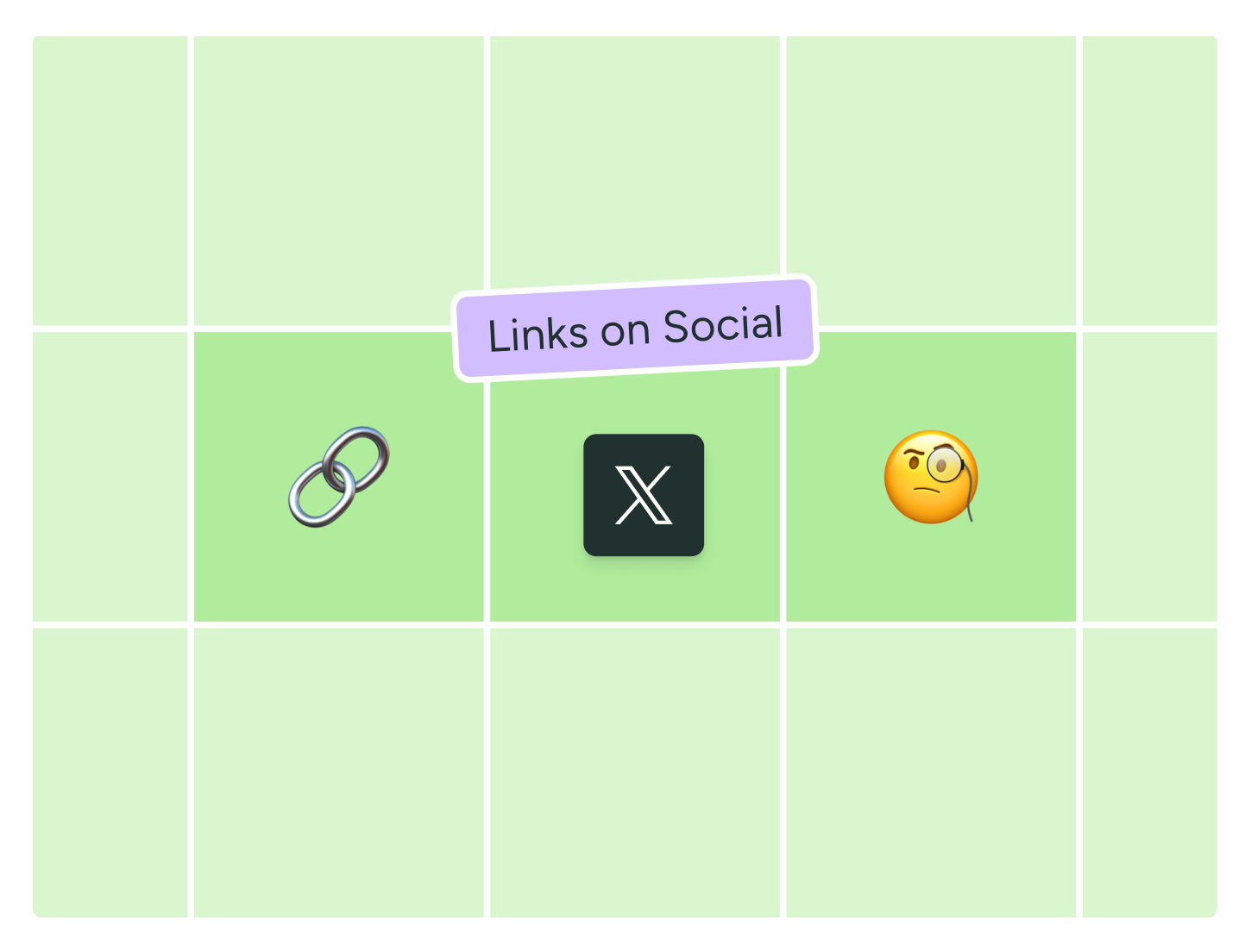


For years, creators have shared the same warning: “Don’t post links — they’ll harm your reach.” But numbers to back it up have been hard to come by. That’s what we set out to test, this time on X, formerly known as Twitter.
With the help of our data scientist Julian Winternheimer, we dug into 18.8 million posts from 71,000 X accounts, and the results are clear: links really do hurt performance.
For creators and brands who rely on sharing links as part of their content strategy, the data points to something bigger than a small algorithm tweak. Let’s get into the numbers.
Do posts with links affect content performance on X?
The short answer: yes — and the impact is dramatic.
Our analysis shows that posts with links perform significantly worse than other content types.
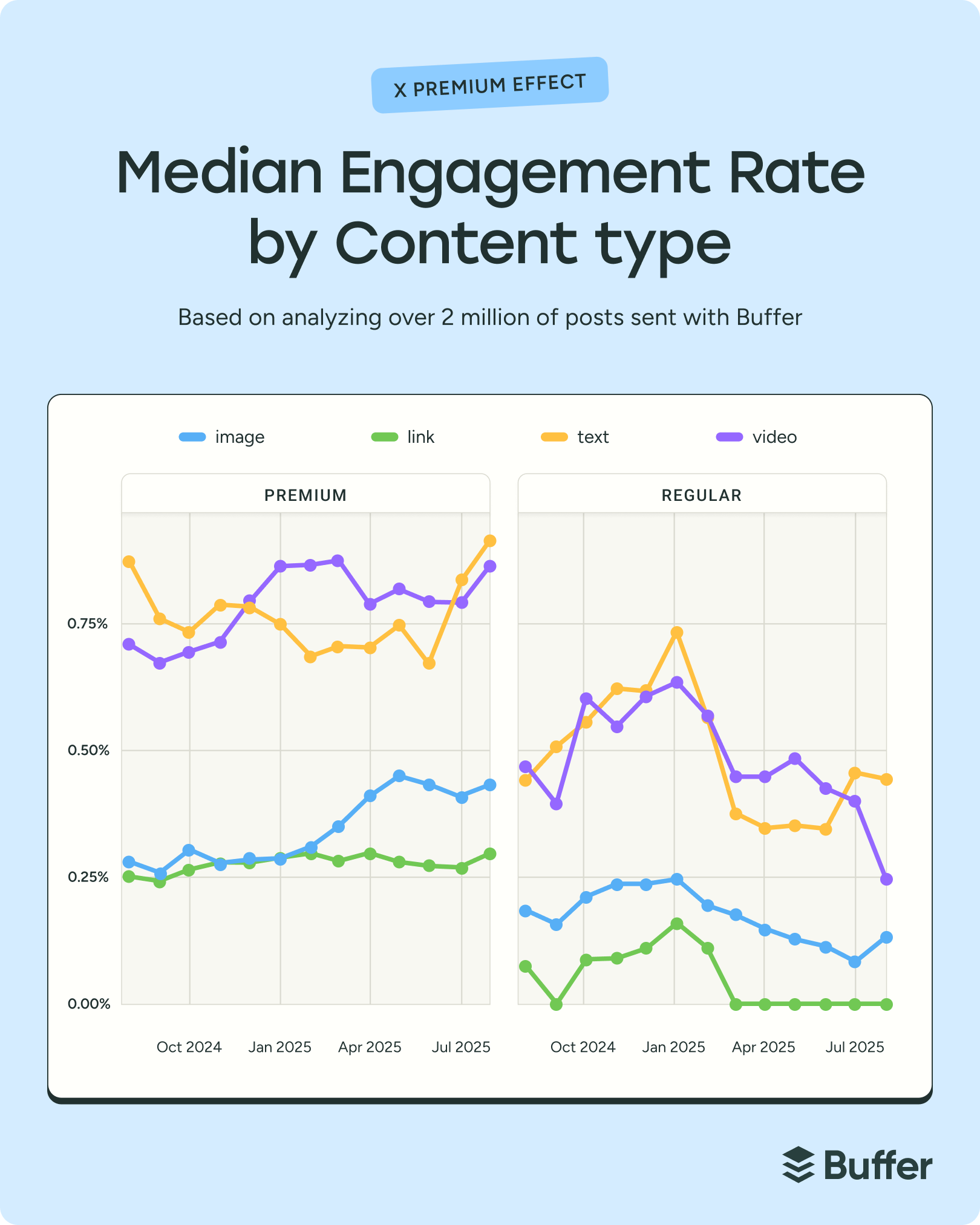


As of August 2025,
- Link posts had
- 0% engagement rate on regular accounts
- ~0.28% engagement rate on Premium accounts
- Image posts had
- ~0.20% engagement rate on regular accounts
- ~0.42% engagement rate on Premium accounts
- Video posts had
- ~0.25% engagement rate on regular accounts
- ~0.85% engagement rate on Premium accounts
- Text posts had
- ~0.40% engagement rate on regular accounts
- ~0.90% engagement rate on Premium accounts
The graph shows how, even with reduced reach for regular accounts, every format holds some engagement except links, which fall to absolute zero after March 2025.
This does seem to confirm the idea that the X algorithm downranks content with links.
However, Premium accounts continue to see reach and engagement on link posts — though even there, links underperform compared to text, images, and video.
When we dug into the best content to post on X in March (before the drop), links were the lowest-performing format on X. However, they weren’t at absolute zero, so the sharp drop post-March puts into perspective just how much has changed on the platform since then.
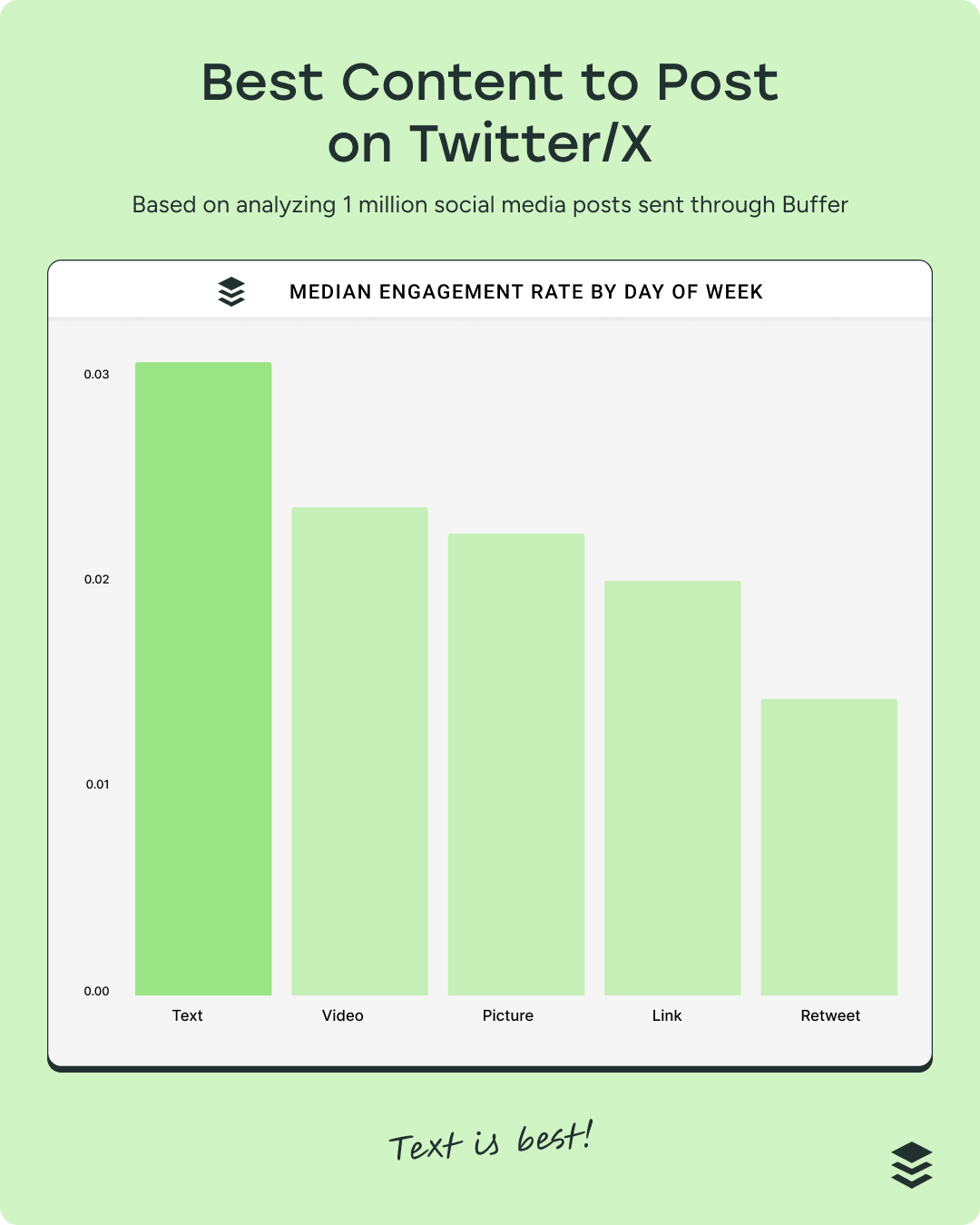


Premium users, on the other hand, can still drive engagement with links — though even there, native formats consistently outperform.
What stands out most is the scale of the divide: Premium accounts now see around 10x the reach of regular ones. That creates a compounding cycle: more reach → more followers → even greater reach.
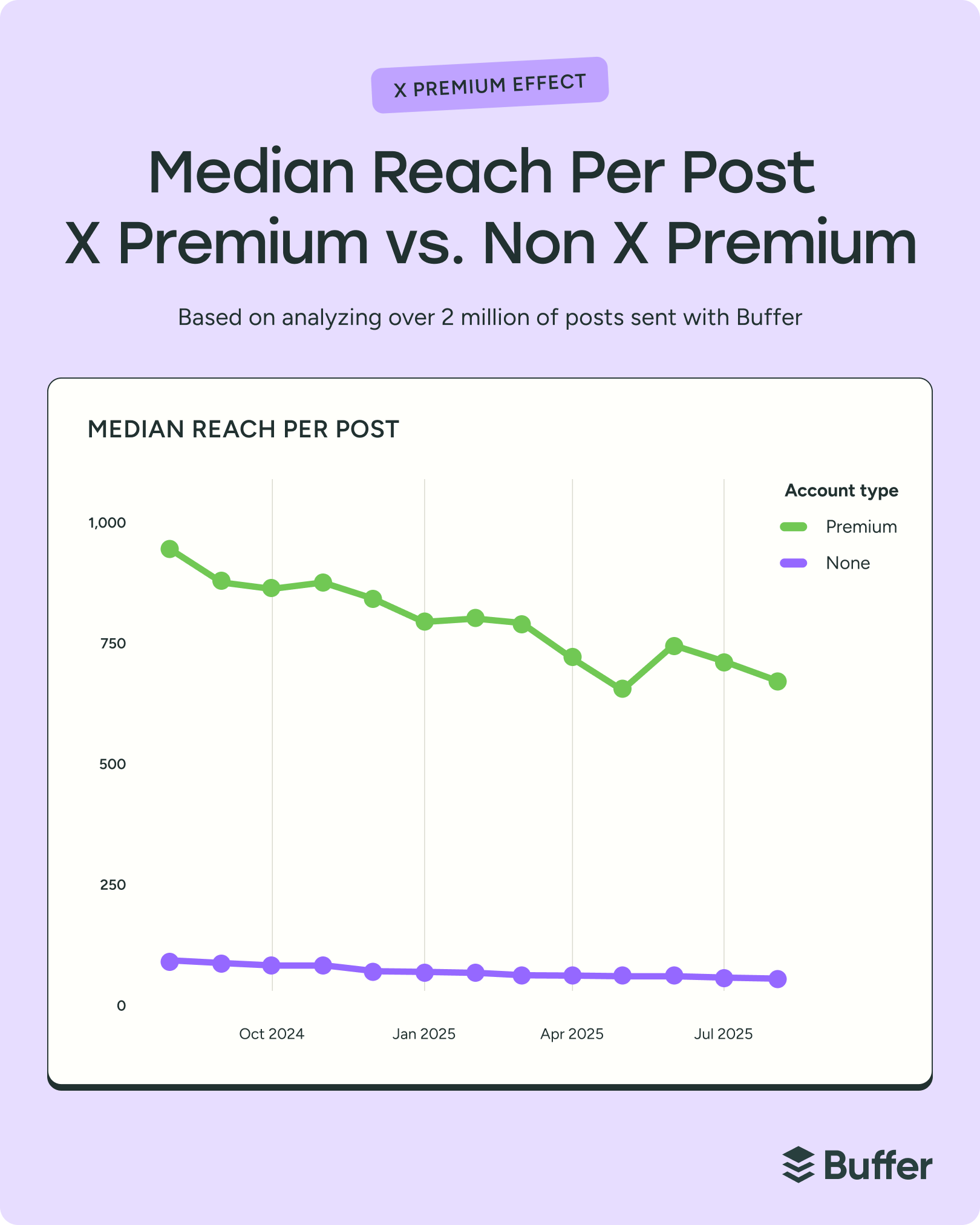


And not all Premium is equal. Premium Plus subscribers get the highest reach of all account types, with mid-tier and Basic Premium still far ahead of regular users. This advantage suggests the difference isn’t just about larger audiences — it’s built into how X distributes content.
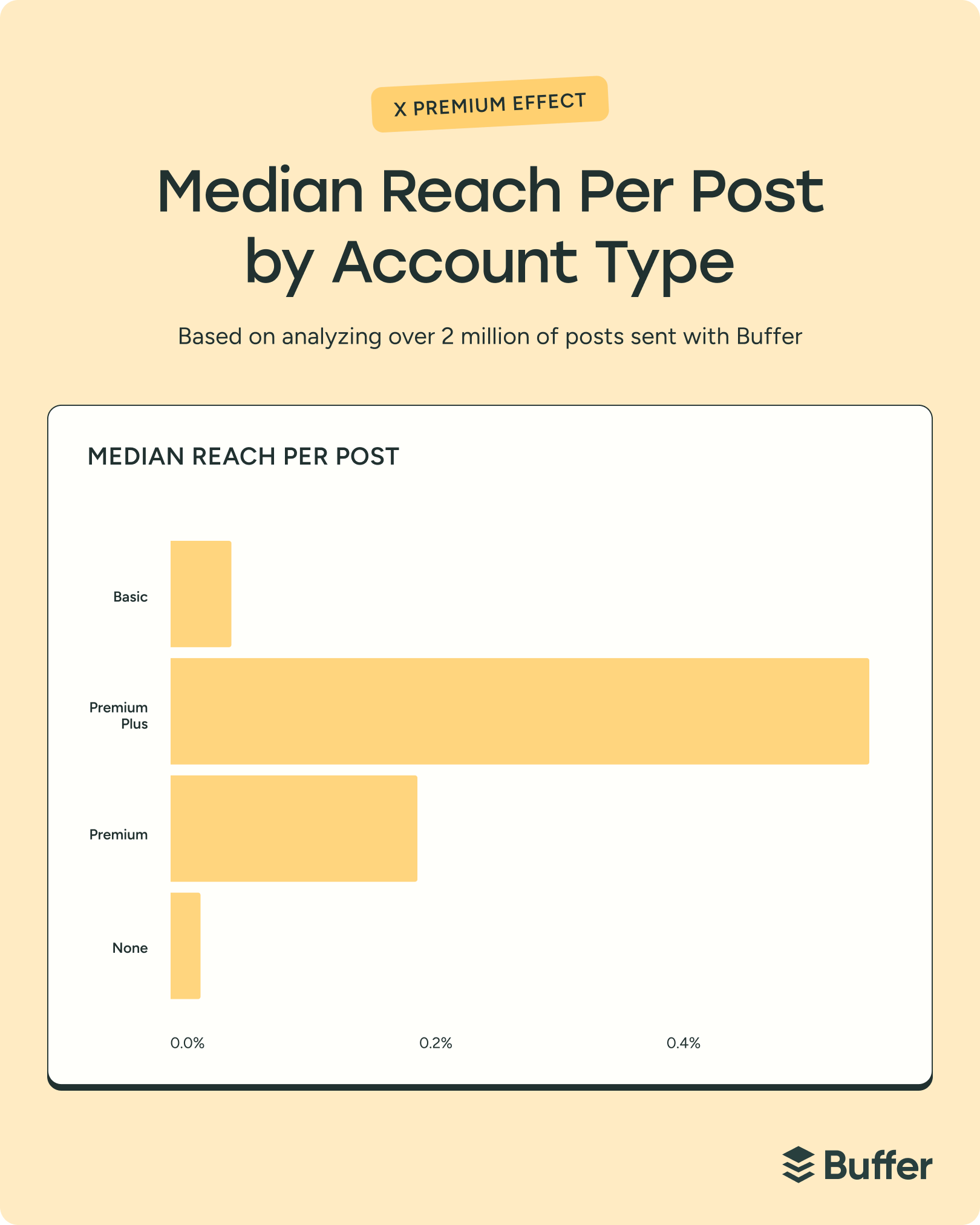


⚡Learn more about the impact of X Premium on content performance in Does X Premium Really Boost Your Reach? An Analysis of 18M+ Posts. Spoiler: It does!
Why is there such a sharp divide?
The most likely explanation is platform incentives. X has a strong reason to keep users on-platform instead of sending them elsewhere, and it also has a clear motivation to encourage more users to pay for Premium. Together, those incentives mean link posts — especially from non-paying accounts — get pushed down in distribution.
The result is a two-tier system:
- Regular accounts: link posts are effectively invisible.
- Premium accounts: links are still viable, but carry lower engagement than other formats.
This points to a fundamental change in how X rewards content — and a clear message to creators and brands who depend on sharing links.
Implications and workarounds for link posts on X
For creators and brands, the message from X is clear: link posts are no longer a reliable way to reach your audience unless you’re in the Premium tier.
If you’re running a regular account, external links won’t just underperform — they may not perform at all.
Since March 2025, link posts from non-Premium accounts have been effectively invisible, with median engagement rates stuck at zero. That means newsletters, product pages, and blog posts shared directly in the timeline won’t drive the results they used to.
So what can you do?
- Invest in Premium if links matter to you. Premium accounts still generate reach and engagement on link posts, though less than on other formats. If driving traffic is a core part of your strategy, upgrading may now be part of the cost of reaching your audience..
- Use native formats first, links second. For both Premium and regular users, content that stays on-platform — threads, images, video — consistently performs better. Use these to deliver your main message, and treat the link as supplemental.
- Put links in replies instead of the post. While not foolproof, this approach can sometimes avoid the distribution penalty. The key is to make the main post engaging enough to earn attention before introducing the link.
- Diversify beyond links. If you’re sharing articles, consider turning key insights into a short thread. Promoting a product? Pair it with an image or video demo. Think of the link as a bonus, not the centerpiece.
The bottom line: on X, links are now the weakest format you can publish — especially without Premium. Building a sustainable strategy means leaning on formats the platform favors and using links more sparingly and strategically.






















